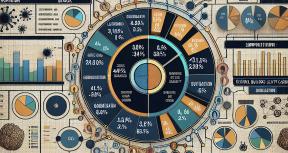What can we learn from the Independent Evaluation Group’s project ratings and lessons?
This blog offers three scenarios for how data generated by the Independent Evaluation Group might be used to understand the performance of projects in a specific sector, the factors contributing to a set of highly rated projects, or to inform the design of new projects.
The Implementation Completion and Results Report (ICR) is one of the World Bank’s (WB) main instruments for self-evaluation. It is prepared by the World Bank at the close of every Investment Project Financing (IPF) project, Development Policy Financing (DPF) operation or Program for Results (PforR) operation.
IEG’s Implementation Completion and Results Report Review (ICRR) is an independent, desk-based, critical review of the evidence, results, and ratings of the ICR in relation to the project’s design documents. The WB and IEG share a common, objectives-based methodology to assess achievements against each project’s stated objectives, and the relevance of the objectives and the efficiency of resource use in achieving the objectives. The ICRR is intended to assess the evidence provided in the ICR, its quality, and the attribution of results to the activities or actions supported by the project under review. It is not simply a summary of what is in the ICR.
What Are Project Ratings?
There are three main project ratings that IEG validates through the ICRR, and one rating that is assigned by IEG only. The three main project ratings are the following:
- Outcome
- Bank Performance
- Monitoring and Evaluation (M&E) Quality
IEG assigns one additional rating based on the material presented in the ICR: ICR Quality.
In addition to providing ratings and a rationale for each, the ICRR provides lessons that build on the lessons in the ICR.
For a more comprehensive understanding of project results, practitioners can turn to IEG’s Project Performance Assessment Reports (PPARs). These documents are independent evaluations of projects based on primary evidence collected by IEG. In preparing a PPAR, IEG staff visit project locations and gather rich qualitative data, making them valuable, complementary resources for assessing project effectiveness and identifying areas for improvement in future projects. As such, ratings in PPARs supersede those in ICRRs, and PPAR lessons are more in-depth and context-specific. Keep in mind that PPARs are only done for a fraction of projects.
IEG project ratings serve as a starting point for its annual Results and Performance of the World Bank Group and for more cross-cutting evaluations of broader thematic and sectoral topics. For more details on how ICRRs are conducted, refer to the Guidance Manuals for IEG Validators for IPF and DPF.
The IEG website data pages contain a structured database of ratings and lessons, facilitating easy extraction and analysis. The navigation of these pages was described in the Explainer blog.
How can Practitioners Use IEG Ratings and Lessons?
Here are three scenarios that illustrate how practitioners can utilize this data:
The lessons provided in ICRRs and PPARs offer glimpses into potential improvements for future projects. These lessons serve as starting points for organizing evidence and conducting detailed analysis. To gain deeper insights, it is important to understand the broader context, nuances, and additional information provided in IEG project validation and evaluation reports.
Scenario 1: Extracting Lessons for Specific Sectors and Regions
Suppose you are a project manager or a Task Team Leader (TTL) designing a new project in the Energy and Extractives sector in the East Asia and Pacific region. You might want to review lessons from that sector and region to mitigate risks in project implementation, for example. You can:
- Access the dataset from the IEG Data World Bank Project Lessons website.
- Adjust the filters for Global Practice and Region to generate a list of projects with ICRR and PPAR lessons.
- Use the “Lessons Search” feature to search for keywords like "implementation."
- Export the data for further analysis in Excel or other software.
- Alternatively, access the full dataset for text analytics or Artificial Intelligence (AI) tools for a deeper project analysis (see Scenario 3 below), with options to access individual project documents via the Project Details link.
Scenario 2: Take a Closer Look at Highly Rated Education Projects in the Middle East and North Africa Region
This exercise will require exporting data from both the WB Project Ratings page and the WB Project Lessons page:
Lessons: Suggest first downloading the entire data set to Excel.
- Filter “Education” Global Practice in the “Middle East and North Africa” region, ensuring the Evaluation Type includes All.
- Filter projects by “Education” Global Practice and “MNA” region.
- For any of the 6-point ratings, filter by “Moderately Satisfactory,” “Satisfactory,” and “Highly Satisfactory.”
- For the 4-point ratings, filter by “Modest” or “High.”
You now have the list of highly rated projects in that sector and region, and lessons from their ICRR and PPAR documents.
Scenario 3: Summarizing Lessons for Water Projects Using ChatGPT or other AI tools
After following the instructions above, you can use ChatGPT or other AI tools to analyze IEG lessons for summarization. By uploading the lessons data and using prompts like "What are the common themes in the lessons for water global practice projects?" you will receive a response highlighting themes such as community involvement, capacity building, private sector roles, regulatory frameworks, integrated approaches, mitigation measures, and monitoring and evaluation. To refine the output, you can repeat and adjust the prompt as needed. However, it is important to remember that users are responsible for verifying the information and using their judgment when applying AI-generated content. The AI output should be cross-referenced with the original data source and project documents for further validation.
Data for Future Projects
The IEG website data pages offer flexibility for analyzing project data and lessons. By using simple parameters and options for reviewing individual projects or aggregated data by sector, region, and other meta data, practitioners can inform their project design and implementation.








Add new comment